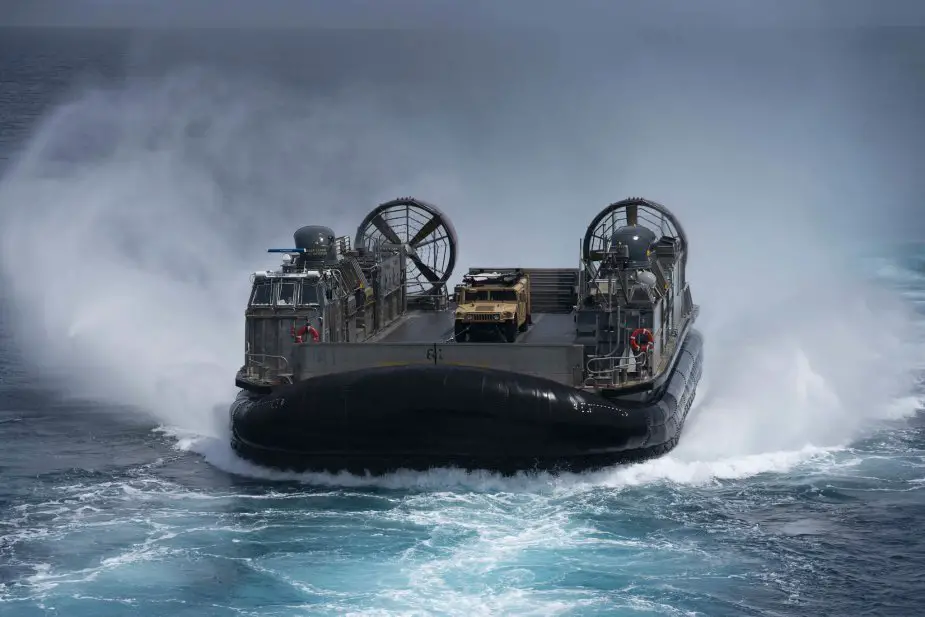According to a picture published U.S. Pacific Fleet on April 19, 2021, a landing craft, air cushion (LCAC) transits the Pacific Ocean while conducting well deck operations with amphibious assault ship USS Essex (LHD-2).
Follow Navy Recognition on Google News at this link
 A Landing Craft Air Cushion LCAC in the Pacific Ocean (Picture source: Flickr account of U.S. Pacific Fleet)
A Landing Craft Air Cushion LCAC in the Pacific Ocean (Picture source: Flickr account of U.S. Pacific Fleet)
For the foreseeable future, in order to get significant forces and heavy equipment from ships to a location beyond the beach, the Marine Corps will rely on the Navy’s fleet of specialized vessels, the LCAC and its successor, the SSC. First deployed in 1984, the LCAC revolutionized amphibious operations.
The LCAC is a high-speed (40 nautical miles per hour) air cushion platform that floats just above the water. Air cushion technology makes some 70 percent of the world's shoreline accessible to landing forces versus 15 percent with traditional amphibious ships.
The LCAC is designed to be carried and operate from all Navy amphibious ships that possess a well deck, the large, enclosed space located in the stern of many amphibious warfare ships, which allows LCACs, amphibious vehicles, and boats to load men, vehicles and supplies directly from the ship's interior.
It is capable of carrying 70 tons of equipment or 140 fully equipped Marines from an amphibious ship stationed 100 miles at sea, not just to the water’s edge, but over the beach. Because of its unique air cushion system, the LCAC can traverse inshore waters regardless of depth, tides or obstacles as well as on-shore terrain that would hamper the mobility of most military vehicles. LCACs also can conduct evacuation support, lane breaching, mine countermeasure operations, and Marine and Special Warfare equipment delivery.
Because the LCAC was reaching the end of its projected service life, the Sea Services decided to replace this fleet with a new air cushion platform, the SSC. The SSC is an evolutionary advance over the venerable LCAC. The SSC will have an increased payload, greater reliability, higher availability and reduced operating costs. In addition, the SSC will be equipped with Rolls Royce engines that provide power beyond that available in the LCAC. It will also have a new command, control, communications, computers, and navigation suite, which will improve navigation and tactical responsiveness while reducing manning requirements. The current plan is to acquire 73 SSCs.



